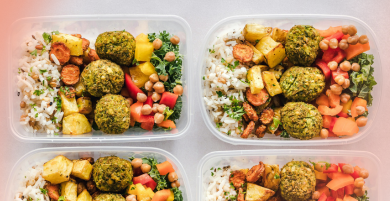Living with PCOD (Polycystic Ovarian Disease) can feel overwhelming — from missed menstrual cycles to constant fatigue, unexplained weight gain, and skin concerns like acne and excess facial hair. While it’s a complex hormonal condition, one thing is clear: what you eat can deeply influence how you feel.
In this blog, we break down how a balanced diet can help manage PCOD, support your hormones, and improve your overall menstrual health.
What Causes PCOD?
PCOD is often triggered by:
- Hormonal imbalances (especially excess androgens)
- Insulin resistance
- Poor diet and sedentary lifestyle
- Chronic inflammation
- Genetics and stress
The result? Missed or irregular periods, weight gain, acne, hair thinning, and difficulty in conceiving.
The Role Of Food In PCOD Management
There is no single “PCOD diet,” but a balanced diet can help regulate insulin, support hormonal balance, reduce inflammation, and ease many PCOD symptoms. Here’s how:
1. Regulates Hormonal Imbalance
Food directly affects your hormones. Refined sugars and processed carbs can spike insulin levels, which in turn increase androgen (male hormone) production — leading to irregular menstrual cycles, acne, and hair growth.
By switching to low-glycaemic, whole foods, you stabilise insulin and reduce hormonal chaos.
Focus on:
- Whole grains like millets, quinoa, and brown rice
- Vegetables like spinach, broccoli, and carrots
- Lean proteins: paneer, tofu, lentils, eggs, chicken
- Healthy fats: ghee, avocado, almonds, seeds
2. Improves Menstrual Health
When your body gets the nutrients it needs, it naturally supports regular ovulation and menstruation. Omega-3 fatty acids, vitamin D, and B-complex vitamins are especially helpful for menstrual health.
Eat more of:
- Flaxseeds and walnuts (omega-3s)
- Sunlight + fortified foods (vitamin D)
- Eggs, dairy, whole grains (B-vitamins)
3. Reduces Inflammation
PCOD is often associated with chronic, low-grade inflammation. Antioxidant-rich foods can calm this inflammation and improve symptoms like bloating, period cramps, and hormonal acne.
Add to your plate:
- Berries, amla, turmeric, ginger
- Green tea, garlic, colourful vegetables
4. Aids In Weight Management
Many with PCOD find it hard to lose weight due to insulin resistance. Eating high-fibre, protein-rich meals helps control hunger, regulate energy levels, and support metabolic health.
Smart swaps:
- Swap white rice for millets or brown rice
- Choose homemade snacks over packaged ones
- Combine protein + fibre in every meal
5. Supports Gut And Liver Health
Your gut and liver help process and eliminate excess hormones. A sluggish digestive system can worsen your hormonal issues.
Support detox pathways with:
- Probiotics (curd, kanji, sauerkraut)
- High-fibre foods (beans, greens, apples)
- Hydration — 2 to 2.5 litres of water daily
Foods To Limit Or Avoid
While it’s not about cutting everything out, limiting certain foods can improve symptoms:
- Refined sugars (cakes, biscuits, sugary drinks)
- Deep-fried and fast food
- Highly processed items with additives and preservatives
- High-GI carbs like white bread and potatoes
- Excess dairy (some people with PCOD report sensitivity)
Final Thoughts
PCOD is a lifestyle-linked condition — and food is your most accessible, everyday medicine. By embracing a balanced diet tailored to your needs, you can reduce symptoms, support regular menstrual cycles, and take control of your hormonal health.
Small, consistent changes matter. Start with one better meal a day. Drink more water. Swap out one refined item for a whole food. Over time, these shifts add up to powerful hormonal balance and improved menstrual health.
And remember — always consult a doctor or nutritionist for a plan tailored to your body.


































































